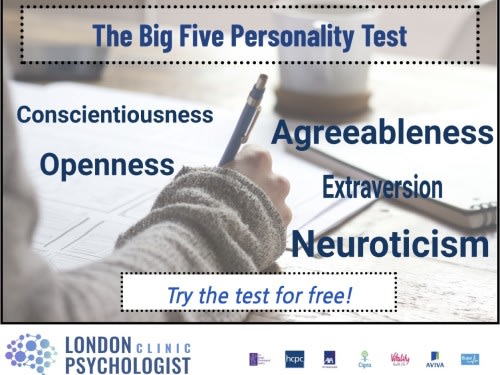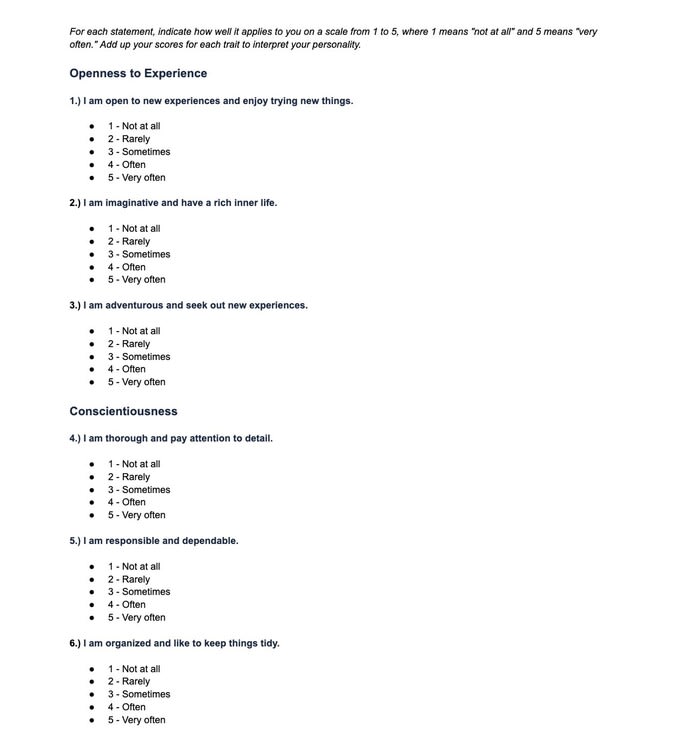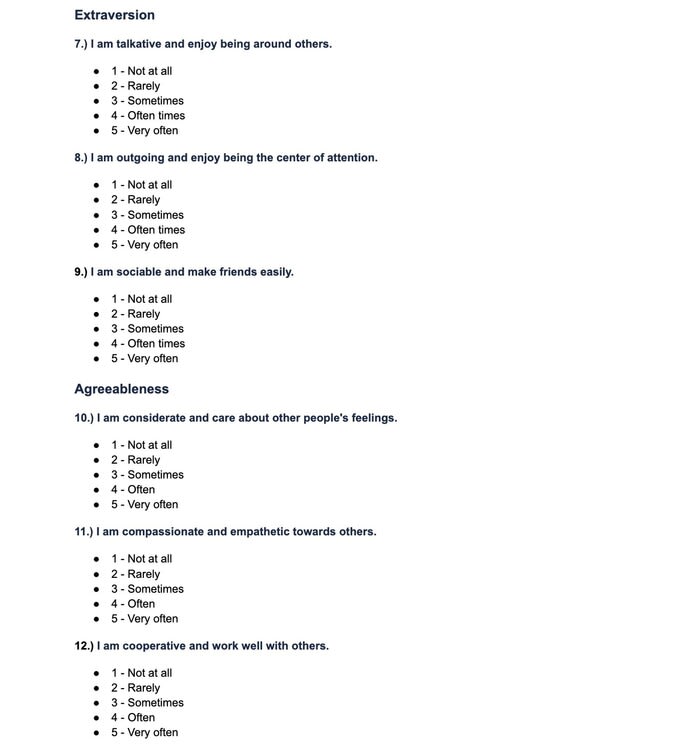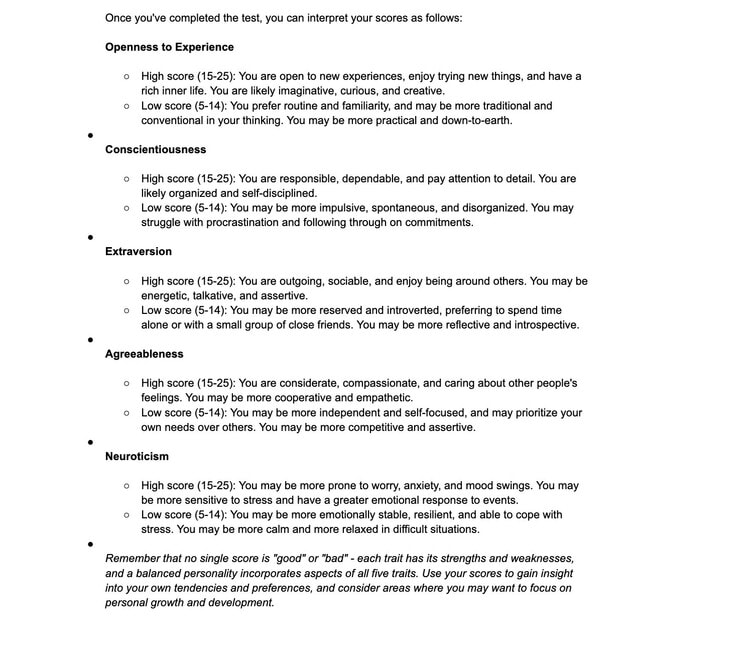The Big 5 Personality Traits

posted 12th April 2024
Understanding the Big Five Personality Traits
The Big Five personality traits model is a widely respected theoretical framework in psychology that describes five broad dimensions of human personality: Openness, Conscientiousness, Extraversion, Agreeableness, and Neuroticism, often remembered by the acronym OCEAN. This model provides a comprehensive, empirically driven view of personality that is applicable to all adults, regardless of demographic or cultural differences.
The development of the Big Five personality traits model is rooted in lexical hypothesis research, which posits that the most significant and universally recognized personality traits become embedded in our language over time. Initial studies in the 1960s by Ernest Tupes and Raymond Christal, followed by refinements by Lewis Goldberg and later work by Paul Costa and Robert McCrae, significantly advanced the model. Costa and McCrae's NEO Personality Inventory helped solidify the Big Five as foundational traits that underpin much of human personality variation. Their research, built on robust empirical evidence gathered through surveys and factor analyses, argues against the model being mere guesswork. The model has also found a broader audience through its integration into online personality tests and its discussion in popular psychology books and articles. These platforms often cite the Big Five as a scientifically grounded way to assess and discuss personality, which can lead to its indirect endorsement by public figures who discuss their results from these assessments.
The Big Five and DSM-5
The Diagnostic and Statistical Manual of Mental Disorders, Fifth Edition (DSM-5), is a tool primarily used for diagnosing mental disorders. It does not incorporate the Big Five traits directly into its diagnostic criteria. However, understanding an individual’s personality profile through the Big Five can provide valuable insights into their behaviour patterns and emotional regulation, potentially illuminating underlying issues addressed within the DSM-5 framework.
Using the Big Five in Therapy
Psychologists can leverage the Big Five traits in therapeutic settings to tailor interventions and understand client behaviours better. For example, someone high in Extraversion may enjoy engaging in therapy through group sessions or social skill-building activities, whereas someone low on Conscientiousness might struggle with the structure and might need specific strategies to enhance their goal-setting and follow-through.
Case Example:
High Extraversion, Low Conscientiousness: A client with these traits might be sociable and spontaneous but may struggle with disorganisation and procrastination. In therapy, focusing on developing structured routines and setting small, achievable goals could help enhance their organisational skills while still honoring their extroverted nature.
High Neuroticism: A client with high levels of Neuroticism may experience frequent mood swings and emotional instability. Cognitive-behavioral techniques that teach emotional regulation and stress management can be particularly beneficial.
Self-Understanding and Growth
In therapy, understanding one's Big Five personality profile can help clients develop greater self-awareness and foster personal growth. For instance, someone who scores high on Openness might use this insight to explore new experiences and creative outlets as a way to manage stress or recover from emotional setbacks.
The Big Five model serves as a guide rather than a definitive measure of personality. It offers a flexible framework for understanding human behavior and tailoring psychological interventions. By incorporating these traits into therapeutic practices, psychologists can provide more personalised and effective treatments, helping clients better understand themselves and how they interact with the world. This model underscores the complexity of human personality and the diverse approaches needed to foster mental health and well-being.
The Big Five personality traits model is utilised by psychologists across various fields, including clinical, counselling, and industrial-organisational psychology, as well as in research settings. Its widespread acceptance and use are due to its robust empirical support and its ability to describe and predict behaviour and job performance reliably.
In therapeutic settings, psychologists use the Big Five traits to understand clients' baseline dispositions, which can influence their behavior patterns and therapeutic needs. This understanding can help in tailoring intervention strategies that are more aligned with the client’s personality, enhancing the effectiveness of therapy.
In the workplace, this model is used to help in hiring decisions, leadership development, and team dynamics. It assists in understanding how traits such as conscientiousness (which correlates with reliability and diligence) and extraversion (important for roles requiring a lot of teamwork or public interaction) can impact job performance.
Overall, the Big Five is not just an academic model but a practical tool used in a wide array of settings, including therapy, workplace dynamics, and personal development, often making it part of the public discourse on personality.
Click on the images below and complete the test the scores are on the last image.







